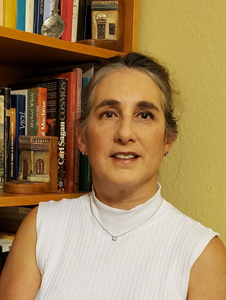Program Information
Results of Irradiations Performed On Radiological Physics Center's Anthropomorphic Lung Phantom and Respiratory Simulating Motion Table
P Alvarez*, A Molineu, C Amador, T Nguyen, D Followill, UT MD Anderson Cancer Center, Houston, TX
SU-E-CAMPUS-T-1 Sunday 3:00PM - 6:00PM Room: Exhibit HallPurpose: To present the results of the irradiations performed on Radiological Physics Center's anthropomorphic lung phantom using a respiratory simulating motion table.
Methods: The RPC's lung phantom is used to credential institutions to participate in NCI sponsored lung clinical trials. When institutions use breath hold, gating, ITV or tracking techniques to account for patient motion, a motion table was included with the phantom. The institutions designed and delivered 3D or IMRT plans that covered an ovoid shaped target located in the left lung. All irradiations in this analysis included heterogeneity dose calculation algorithms approved by the RTOG. The TLD criteria were ±5% about RPC/Inst=0.97 (about 1.00 for Monte Carlo algorithms). Before March 2012 the film criteria required a DTA <=5 mm in the fall off regions of orthogonal profiles taken through the center of the target. After March 2012 the film criteria changed to require >=80% of the pixels in the ROI in each plane to pass a 5%/5mm gamma calculation. The average of the 3 planes must be >=85%.
Results: The lung phantom was irradiated 427 times by 304 institutions. 124 institutions irradiated it 157 times using the motion platform. 79% of the irradiations utilizing the motion platform and 87% of the static irradiations passed the criteria. The overall pass rate for the phantom is 84%. Thirty percent of the moving phantom failures and 67% of the static phantom failures were due to failing solely the film criteria. 4 of 4 (100%) breath hold irradiations, 54 of 68 (79%) gating irradiations, 43 of 61 (70%) ITV irradiations and 23 of the 24 (96%) tracking irradiations passed the criteria.
Conclusion: The moving phantom has a pass rate that is statistically significantly different than that for a static phantom.
Funding Support, Disclosures, and Conflict of Interest: Supported by PHS grant CA10953 and CA081647 from the NCI, DHHS.
Contact Email:


